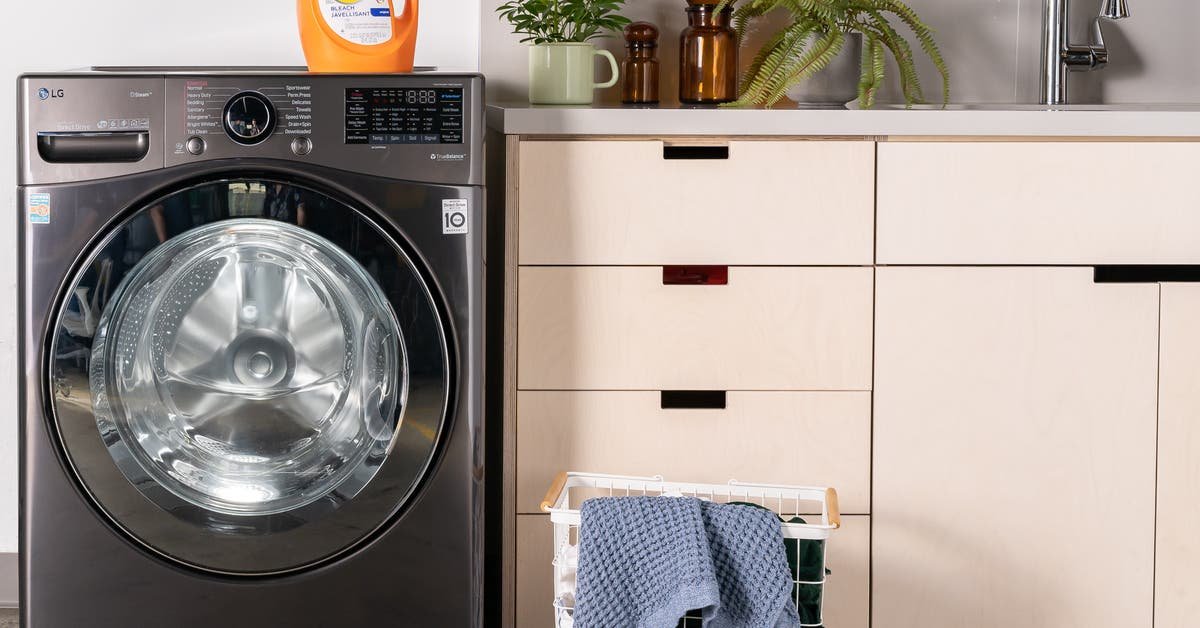
Modern, high-efficiency washing machines tend to need more maintenance than agitator washers. The good news is that it’s pretty easy to prevent—and even reverse—some of the most common problems. Here’s how.
For HE washers in general
Use high-efficiency (HE) detergent. This is crucial. Look for the little “HE” symbol on the bottle or box.
These are high-concentration, low-sudsing formulas, and they’re available at any retailer that sells detergent. We’ve done extensive testing and research to find the best HE detergents if you need help choosing one. Note that it’s also totally okay to use HE detergents in non-HE agitator washers.
High-sudsing, non-HE detergents are bad for modern washers because all those bubbles have a tough time dissolving into such small amounts of water, so they’re hard to rinse away. Modern washers can sense too much sudsing and run multiple rinse cycles to knock it all down. But that process adds as much as 20 minutes to the cycle and wastes a few gallons of water—and it might not wash out all the residue anyway.
The remaining residue from partially dissolved suds eventually causes a buildup of oily film inside the washer. That film can smear onto your clothes and act as a breeding ground for mildew and mold. Several of our sources explained to us that detergent residue can block sensors and impact a washer’s performance, as well. You can avoid all of that by using HE detergent.
Use 2 tablespoons of detergent per load at most. And that’s for the big loads, as in 12 pounds and up. For most loads—the average is about 8 pounds—just 1 tablespoon is enough.
HE detergents have at least double the concentration of traditional detergents, and HE washers use less water per cycle, further reducing the need for much detergent. Most washer manufacturers, in their owner manuals, recommend using 2 tablespoons of detergent. That amount should clean well while minimizing wear and tear on your clothes and your washer.
Detergent makers typically tell you to use more: The minimum suggested dose inside a Tide bottle cap, for example, is about 2½ tablespoons. Tracey Long, communications manager for P&G, told us that the washer manufacturers’ 2-tablespoon recommendation is a holdover from a time when HE washers were new and HE detergents hadn’t been developed yet; using less detergent was the easiest way to avoid oversudsing and all of its problems. Modern detergents don’t get sudsy, so you can use more of it, which gets your clothes cleaner, according to Penny Dirr, P&G principal researcher in laundry.
However, representatives from LG told us that they still recommended 2 tablespoons at most, based on recent and regular testing of current detergent formulas. Another LG rep called it out plainly: “Perhaps the disconnect exists because detergent makers want consumers to use more detergent so they buy more often.” That said, washing machine manuals, including that of our top pick from LG, recommend following the dosage instructions on the detergent bottles.
If you use too much detergent, you’ll feel it as a gritty or slimy residue on your clothes, and your washer will start to accumulate that same oily, mildew-friendly film you’d get from using the wrong detergent. These are common issues. Readers write to us all the time complaining about such symptoms. Ofer Hubara, a repair technician in South Carolina, said that many of the long-term mechanical problems he saw in washers stemmed from people using too much detergent and causing residue to build up. If any of this sounds familiar, you are probably using too much detergent. Just use less. It’s an easy win.
For front-loaders in particular
Leave the door open between cycles. Doing so helps to prevent the washer from getting smelly. Everyone in the industry we’ve talked to recommends taking this step. It allows the drum and gasket to dry out between uses, which helps prevent mildew and mold from growing in the dark, damp crevices.
If you have to close the door because you have kids or pets that might crawl into the drum, or because the door would block your path, that’s okay. You might just need to be more diligent with wipe-downs and drum-cleaning cycles.
Some manufacturers have started to incorporate simple features that work around the downsides to closing the door. LG washers, including our top pick, have a little magnet in the door latch that can keep the door propped open slightly; this lets the drum breathe without requiring the door to be wide open. GE models have a venting feature that you can run with the door closed to dry out the drum. Most washers have small drain holes at the edges of their gaskets so pooling water can drain out. These features are not foolproof, but they do help.
Wipe the gasket. A dry rag or paper towel is fine, no soaps or sprays necessary. Most people never think to look into this crease, but it’s prime real estate for mildew and mold—dark, moist, and surprisingly dirty. Manufacturers usually recommend wiping the gasket clean after every use, but that’s overkill. As long as you wipe under the gasket every few weeks, that should be plenty. If you stay on top of this chore, the gasket will never get too nasty. Lean toward weekly wipe-downs if you use the machine frequently, if you add fabric softener to most loads, or if you keep your washer in a humid room. Here’s a tip: Slap a stick-on plastic hook onto the side of your washer and hang a wipe-down rag on it.
Clean your washing machine. Yes, your washing machine needs to be cleaned. This means no clothes, very hot water, and a cleaning product designed specifically for washing machines, such as Affresh tablets. Most washers have a dedicated self-cleaning cycle, so use that if it’s available.
Even if you let your washer dry out between each use, and even if you use the appropriate amount of the right detergent, some residue will build up inside the machine, which can leave your clothes feeling oily, create a breeding ground for odors, and interfere with the washer’s sensors. A drum-cleaning cycle dissolves that residue.
Most washer brands recommend running a drum cleaning once a month, or every 30 to 40 loads. Really, though, two or three times a year should be enough preventive maintenance for most washers. Plan to run a few more than that if you run a lot of loads, use lots of detergent and fabric softener, or have a humid laundry room.
Even if you wash with bleach, you should still run an occasional self-cleaning cycle with a boric-acid-based cleaner. Bleach kills bacteria, but boric acid breaks up its breeding ground.
If your washer already stinks, wipe out the gasket fold and run self-cleaning cycles until it smells fresh again; the directions on the box of Affresh suggest that this process takes three cycles, but you might find that one does the trick.
For all washers
Wash smaller loads. When your clothes move freely, they get cleaner. This also prevents a lot of wear on your washer.
“Overloading is what really wears the machine out,” said Kevin Harner, technician and owner of an appliance repair service in the Harrisburg, Pennsylvania, area. “Try not to load it more than halfway.” This tip is particularly important for front-loaders because “the extra weight is a strain on the rear bearing,” Harner said.
We don’t know if there’s a particular load size that will keep your washer safe. And every now and then, it’s fine to take advantage of your new washer’s comically large capacity with an enormous, unsorted mega-load. Just try not to make it a habit.
Expect eventual service needs. Beyond taking these basic preventive steps, expect your washer to need service at some point. Repair Clinic has an excellent series of videos about what can go wrong and how you—a regular person with a simple set of tools—can fix many of the most common problems, including broken inlet valves, cracked hoses, and popped drive belts.
Once you start running into issues such as fried logic boards, busted filter housings, and dead direct-drive systems, call a technician and prepare yourself for a big bill.





